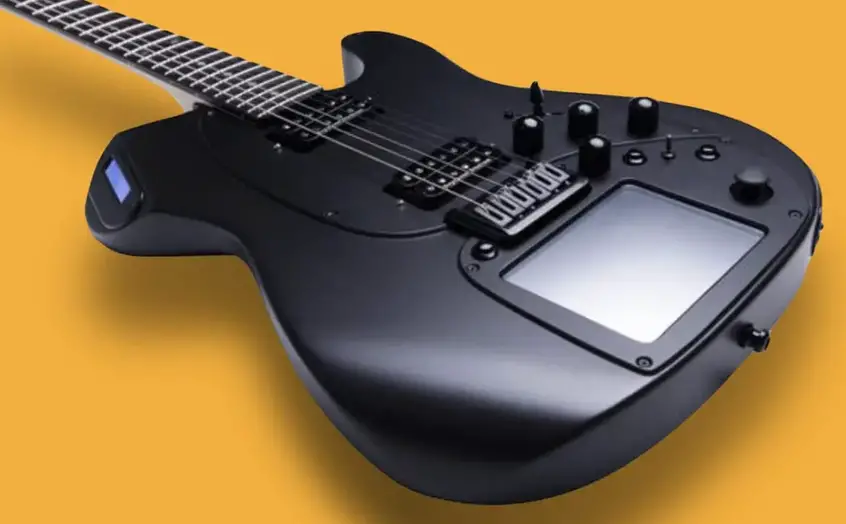There’s something so sophisticated yet classic about the guitar. If you want to amp up the wow factor, you can adopt guitar tech that rejuvenates your sound or hones your talent.
Innovations are everywhere on the market, and some tools in development can genuinely make a difference to tech and music enthusiasts everywhere. Let’s talk about guitar tech.
Guitar Tech

MIDI Guitars
Musical Instrument Digital Interface (MIDI) has made its mark in guitar hardware. It was developed throughout the 1980s to enable different musical devices to interact with one another, producing various new sounds depending on the instrument a controller is connected to.
MIDI guitars are now fully capable of producing the sounds of different instruments in real time. These units work by having a built-in converter that instantly changes the chords you play. If you aren’t too proficient with other instruments, a guitar lets you get the sound without learning it.
Self-Tuning Guitars
Guitars naturally go out of tune after some time. It typically comes from aging strings or questionable manufacturing, since tension is necessary to keep the notes pristine. Luckily, there are guitars with self-tuning mechanisms.
A self-tuning guitar works by analyzing the notes of your strums and adjusting string tension. The feature works with the press of a button, allowing novices and professionals to change the configuration of their guitars in no time. The bridge can consistently hold the tension if you feel like sticking to one tuning.
Wireless Guitar Systems
Wireless technology will always be helpful to musicians dealing with multiple cords. Technicians have finally fine-tuned transmitters of this nature to ensure they won’t pick up radio interference.
That said, most wireless guitar systems no longer rely on radio waves. Smart guitars offer a Bluetooth connection to different mobile devices, allowing seamless sound transmission. You can also get plug-in transmitters, which work great for connecting guitars via Bluetooth or Wi-Fi.
Virtual Pedal Software
A virtual pedal system is a software program that allows you to configure digital signal processing effects. Rather than manually switching through pedals, you can change them by pressing a button.
Effects allow creativity in playing the guitar. For instance, loopers record and repeat notes for a fun jam session. Some amplifiers can change the tone of your guitar. Adjust your guitar’s modulation, reverb and more with virtual pedal boards.
Kovar Strings
Most guitar strings are made from bronze, steel, nickel and nylon, which can deteriorate over time due to corrosion. This is where Kovar strings come into play.
Kovar is a nickel-cobalt alloy. Thanks to its properties, the strings are resistant to corrosion buildup while keeping the quality of the sound intact. This variation is perfect for guitarists with sweaty hands since it can handle moisture well. Even if you don’t have sweaty palms, playing, and maintenance are simpler.
Augmented Reality Tutorials
Feel like you can improve how you play the guitar? While music-related abilities are 50% inherited from your family, there are still other ways to pick up this talent. Augmented reality tutorials can enhance the learning experience.
The tutorial software uses a camera to display a live feed of your guitar. AR markers will highlight different chord positions so you’ll know where to place your fingers and improve your overall playing.
Biometrics-Powered AI Tutor
If you prefer having an instructor, you can also utilize an AI tutor. Various biometric technologies help map you in different digital systems. When you don’t these wearables, you can record your strumming and picking gestures for the algorithm to analyze.
While a human-computer learning experience can be beneficial, this concept is still in progress. Biometric data varies depending on the scales a player is working with. Unfortunately, this can affect the judgment of the tutoring program and make it unreliable.
3D-Printed Guitar Builds
3D printing is an intricate process that allows people to create flexible designs while maintaining product quality. This guitar tech can help many guitar enthusiasts design and print an instrument that suits their needs and playing style.
Crafting a guitar digitally and printing it out can be quite the process rather than just getting one handcrafted, but the customization factor can offer endless possibilities. You could make components like the body lighter, which benefits those who find it difficult to manage heavier units.
Micro Amps
Amplifiers are well-loved tools in the guitar scene, but they can be heavy to lug around. Luckily, there are now compact tube and solid-state models. These units are easy to bring to various venues while delivering solid support to one’s performance.
There are also even smaller amps that connect to the neck or body of your guitar. These small processors allow the warmth of your sounds to flourish. Some variations can also add effects similar to pedals.
Guitar Tech That’s Reinventing the Instrument
Technology has long been present in the music industry, so it’s easy to see why advancements in this day and age have changed how people play their instruments. See what would enhance your experience as you practice and perform.

